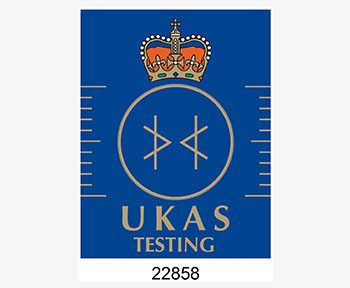Women who are beauticians, hairdressers, accountants, and retail workers may be at an elevated risk of ovarian cancer. Research suggests that work comprising regular contact with possible carcinogens, such as add-on dyes, bleach, synthetic fibres, and even talcum powder, may have a connection to the most significant risk of ovarian cancer. A CA125 Home Test may help to see if ovarian cancer treatment is in process and detect possible ovarian cancer levels that have increased over time. This brings about the widespread use of CA125 blood screening. This research is still introductory, and we need more investigations like this or even a study on CBC to recognize and confirm which occupational threats precisely cause cancer among females. CBC Blood checks are instrumental in finding indications of infections and other conditions.
What is the link between CA125 cancer and a job?
As stated, investigators recognized 29 possible carcinogens which increase cancer risks:
- Bleach
- Dyes
- Talcum powder
- Polyester and other synthetic products
The research stated positive indications between 20 occupations and Ovarian Cancer. For hairdressers and beauticians, the threat of ovarian cancer extended even ten years after they changed professions.
Researchers confirmed that the sample size for each profession was tiny to support extensive conclusions about the whole threat. Therefore, the outcomes shouldn’t be taken to mean that women should keep away from these professions, only that there should be more educational programs on occupational risks, particularly for women.
What are the Noted Risk Factors of Ovarian Cancer?
Many factors are responsible for raising the risk of ovarian cancer, which comprises:
- Older age
- no childbearing
- obesity
- Hormone therapy after menopause
- A family record of ovarian, breast, or colorectal cancer
Can Baby Powder Cause Ovarian Cancer? Its Necessities CA125 Home Testing
While many reports have claimed that talcum powder usage in the genital area leads to ovarian cancer in some women, studies have displayed that talcum powder single-handedly is not a carcinogen. In contrast, talcum powder is excavated from the earth, and at times, its natural environment comprises asbestos, a known carcinogen. As such, the CA125 Report calculates the protein volume in the blood, indicating risk levels for cancer. This checkup may help detect specific cancers during and after treatment. In a few situations, the examination may also be used to look for initial signs of ovarian cancer in people with an extremely high risk of the disease.
What happens if the CA125 Result is positive?
The CA125 Home check is a tumour marker exam. Elevated levels of specific tumour markers in your blood may indicate cancer. If you have cancer, calculating specific tumour markers may aid in providing notable information about how to evaluate your disease.
Along with this exam, the CBC Blood Report also plays a vital role in detecting cancer. A complete count is a standard blood test that is constantly part of a daily checkup. This exam can assist in seeing a variety of disorders, including infections, anaemia, and many diseases of the immune system, as well as some cancers.
Ovarian cancer is sometimes caught in later stages since there are often few early signs in the progress of the disease. Unluckily, late-stage ovarian cancer can lead to pain and soreness. And although treatment frequently helps to reduce the pain, some treatments may include discomfort. If you discover yourself in this situation, there are ways you can lessen the pain.
Where does CA125 ovarian cancer cause pain?
In its earliest stages, ovarian cancer may have no signs or only moderate ones. These signs include bloating, pelvic or abdominal pain, difficulty eating or feeling full at some times, and urinary urgency. Ovarian cancer pain may also stretch into the back, cause pain during intercourse, and, in advanced stages, also lead to leg pain.
Is ovarian cancer pain constant, or does it come and go?
Ovarian cancer pain can be difficult to recognize initially. Women constantly report feeling a general pelvic pain sensed like a bit of pressure. This pressure comes and goes. Our training and setbacks influence the ovary movement when we aren’t as active, so sometimes women feel better when they exercise.
What does Ovarian Cancer pain feel, and when to perform the CA125 Checkups?
Women may go through numerous types of pain due to ovarian cancer: extreme discomfort, sharp or intense pains, and a sense of bloating or dull and consistent aches in the bones. Some women may not feel pain until their ovarian cancer is more advanced.
Advanced ovarian cancer can lead to problems that build the pain over time since the tumour has already developed. The pain has to do either with disruption of bone or intestinal blockage and bowel dysfunction connected to the growth of the disease, which produces a blocked or twisted bowel. That’s a highly late event throughout ovarian cancer. Regular screening is necessary for ovarian cancer.
Does cancer usually show up in CBC Health check?
Besides leukaemia, most cancers cannot be found in daily blood work results, for instance, a CBC Home check kit. But despite that, particular blood tests are planned to recognize the tumour markers, chemicals and proteins that may be discovered in the blood more than usual when cancer is found.
Are there Therapies and Medication alternatives to help manage ovarian cancer pain?
When an ovarian cancer result is positive, treatment of the disease is the first strategy to fight the cancer and try to reduce the pain. But disease management also comprises pain medication to control the pain.
Sometimes, the treatments for ovarian cancer can appear to be worse than the disease. Surgery, chemotherapy, radiation therapy, each of these holds a set of feasible side effects and issues and difficulties, not the least of which can be pain. Pain management relies on the cause of pain.
Women with advanced disease may also require alternative or radiation treatments. This is done to lessen the size of the tumour and make it smaller and more straightforward to remove. Chemotherapy may also help after surgery to stop its spread. Regardless, chemotherapy can also lead to neuropathic (nerve) pain.










